Are you looking for projects that the Section of Electronics & Photonics is currently working on? On this page you can find all projects by the Section of Electronics & Photonics - Department of Electrical and Computer Engineering, Aarhus University.
Below you can find a list of all current and previous projects of research, their status, mission, and funding:
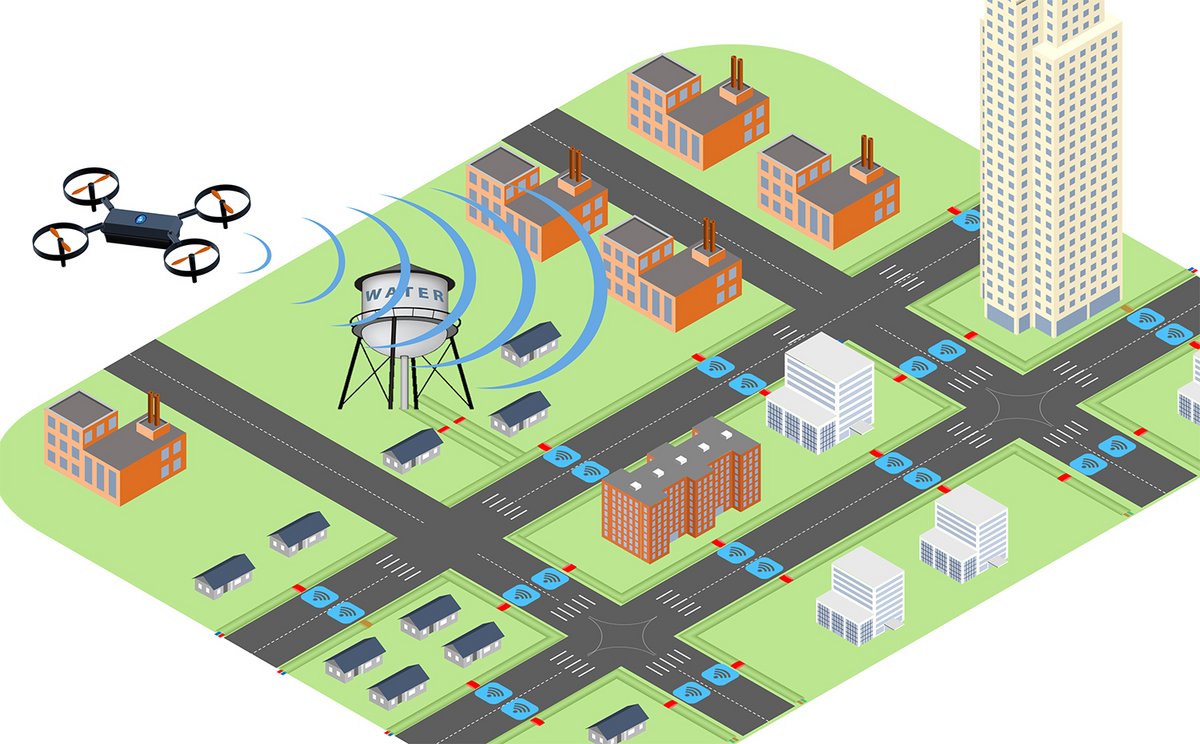
In Denmark, approx. 18-20 per cent of the heat generated by district heating plants is wasted due to heat loss in the distribution network. The same figure applies more or less to all European district heating network systems.
A new research project supported by Innovation Fund Denmark aims to develop an intelligent sensor system that can very precisely monitor the district heating grid and provide new, valuable knowledge about the entire system, thus saving district heating plants enormous sums on monitoring, maintenance and heat loss.
"Technologies have been developed to help detect leaks in district heating systems for decades, but there is still no cheap, simple and autonomous technology which can transmit operational data such as temperature and pressure to the cloud even without an external power supply. This is what we want to develop with this system, in which we link brain-inspired, so-called neuromorphic data processing with energy-harvesting technologies to create an extremely low-energy system, built directly into the district heating pipes," says the project manager, Associate Professor Farshad Moradi from the Department of Electrical and Computer Engineering at Aarhus University.
Drone thermography has been used in several places to detect loss of energy quite accurately. But with thousands of kilometres of pipelines for large urban areas, and with the need to manually pilot the drone and review the material, this is no cheap solution.
The focal point of this new project, which is called PipeSense, is very small sensors placed inside the insulation material around the district heating pipes that automatically harvest energy from their surroundings. Consequently, the sensors do not need a battery, as they continuously measure a wide range of different parameters.
Data processing takes place directly in the sensor, where artificial intelligence learns to recognise important and real time data in the data stream, only communicating the most important information:
"By using brain-inspired data processing, we can drastically reduce the amount of data that the sensor has to process and transmit. We expect these sensors to have a very low power consumption," says Farshad Moradi.
The sensors transmit relevant information to central communication hubs located in a LoRaWan (Long Range Wide Area Network) or to autonomous drones flying around to intercept data in real time.
The PipeSense technology will be used to provide knowledge for combined heat and power plants about the conditions in and around the district heating pipes, for example pressure, flow, corrosion, humidity and temperature, and it will enable the plants to optimise the operation of the pipeline grid for maximum efficiency and reduced heat loss.
"Leaks and heat losses are major challenges in the district heating grid today. The development of intelligent battery-less sensor technology will support Logstor's vision of a smart supply network, where we can optimize operations with real-time sensor input from the network and reduce energy losses considerably. Based on our experience from Denmark, we expect that this technology will spread to our export markets," says Kristian Overgaard, Head of Innovation at Logstor A/S.
PipeSense is being funded by Innovation Fund Denmark with DKK 13.6 million and it has a total budget of almost DKK 18.6 million. The project includes four Danish partners: Logstor A/S, Creative Sight ApS, Aalborg University and Aarhus University. The project will run until 2024 and it is being headed by Farshad Moradi, Aarhus University.

Throughout history, humankind has devoted significant effort to developing machines and tools that can mimic human functions, either relieving people of some of their hard work or surpassing their ability to do it in time or scale. One of the great frontiers is the development of computers that can mimic the human brain in things such as computational power, learning and energy efficiency. The term "neuromorphic computing" was coined more than 30 years ago, and neuromorphic devices are an attempt to mimic aspects of the brain's architecture and dynamics to achieve these goals. The EU-funded SpinAge project is developing a novel neuromorphic computing system harnessing cutting-edge technologies that could enable an improvement in performance over current systems by at least 4 orders of magnitude, bringing us closer than we have ever been to mimicking the brain with a computer.

Analog-to-digital conversion is the process by which a signal derived from the analog world is translated into digital information that can be processed by digital computers. This critical translation is accomplished by an on-chip analog-to-digital converter (ADC). The main concerns of ADC designers are the resolution, conversion speed, and power consumption. However, in some applications such as image sensors, an additional essential constraint is the compactness of ADC because the size of the ADC must be equal or lower than the pixel size. As opposed to traditional researches revolving around finding circuit and architecture solutions for ADC design downscaling, in this project, Spin Hall-Based Analog to Digital Encoder (SHADE), we intend to push analog design towards device solution as a new avenue for next-generation ADC and sensor integration. In SHADE, we will push the state-of-the-art technology towards the hybrid structure of Complementary Metal Oxide Semiconductor (CMOS) technology and spintronic devices enabling analog circuits with higher speed, lower power, and significantly smaller area.
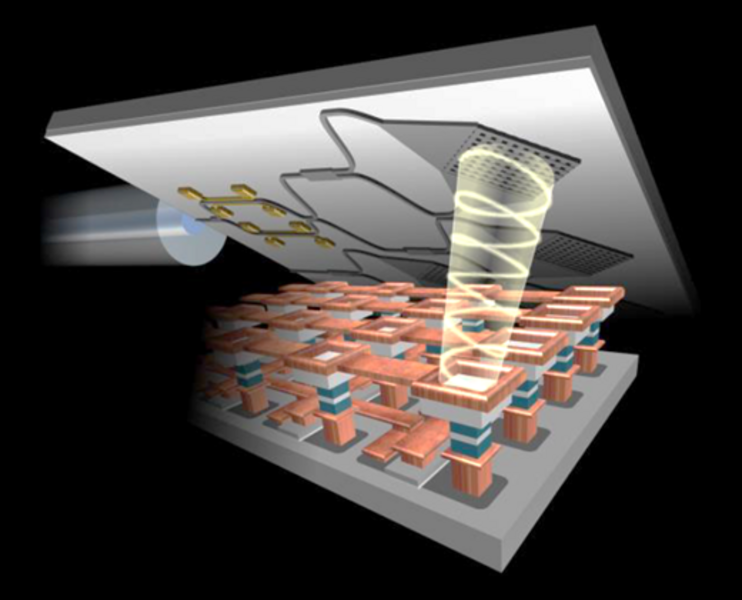
The main objective of SPICE is to realize a novel integration platform that combines photonic, magnetic and electronic components. Its validity will be shown by a conceptually new spintronic-photonic memory chip demonstrator with 3 orders of magnitude higher write speed and 2 orders of magnitude lower energy consumption than state-of-the-art spintronic memory technologies. This enables, e.g., future petabit-per-second processor-memory bandwidths, required in a decade from now, and highly energy-efficient exascale datacenters with reduced carbon footprint. Such a versatile memory will result in so-called Universal Memory: one technology for all memory applications ranging from cache to storage.
The methods to achieve this are based on the recent discovery of magnetization reversal by short optical pulses. SPICE will bring this technique to the integrated circuit level by first developing free magnetic layers that can be optically switched into a magnetic-tunnel-junction layerstack, with optically transparent top contacts. These layers will then be processed into spintronic memory elements that can be electrically read. A novel short-pulse switching architecture will be designed and implemented in a silicon photonic integrated circuit. This photonic switching layer will then be combined with the spintronic memory layer to achieve an optically switched 8-bit memory with write efficiency of 600 fJ per bit: the proof of concept of the technology.
The novelty of SPICE is the convergence of the emerging fields of opto-magnetism and spintronics with electronic and photonic integration technologies. The ambition is to develop this technology in such a way that it can be compatible with future mature electronics fabrication processes, for real-world applications beyond 2025, thereby creating a new field. The SPICE platform is therefore foundational as it can be used not only for ultrafast and energy-efficient memory, but also for RF nano-oscillators and sensor technology.
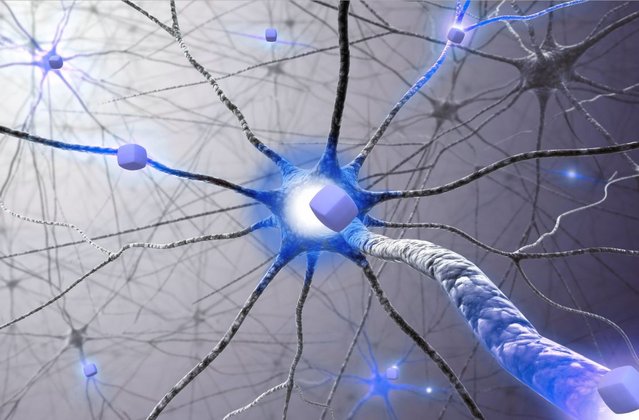
The main goal of the STARDUST project is to realize a novel wireless implantable and independent micro-scale device (200x200x200 µm3) enabling in-vivo electrophysiology, optogenetics and ultra-localized drug delivery in freely moving animals. The device will be used to target specific neural circuits of the brain and test a new therapeutic approach for Parkinson’s Disease (PD).
The methods used in this project are based on cutting-edge miniaturized technology combining integrated chips, microelectromechanical systems (MEMS), local drug delivery, integrated electrodes and micro-scale light emitting diodes (µLEDs). STARDUST will benefit from these advances and for the first time provide an implantable ultrasonically-powered miniaturized device for in-vivo optogenetics, local drug delivery and electrophysiological monitoring – all in one single device. The proposed device is expected to provide an output power of 1-20 mW/mm2 for optogenetics with two different wavelengths, one for neuron activation and one for triggering drug-delivery; STARDUST will provide proof of concept.
The main novelty of the STARDUST project is the convergence of multiple, interdisciplinary fields including optogenetics, triggered drug-delivery, miniaturized ultrasonic energy harvesting, material science and nanoelectronics. The main ambition of the project is to develop a new technology platform to be used for future implantable in-vivo optogenetic devices for monitoring and treating diseases, with an optional local drug delivery add-on beyond 2025. Establishing proof of concept of the STARDUST platform will be the foundation for other applications within photodynamic therapy such as cancer treatment and other neurological and non-neurological disorders.

Neuromorphic computing has emerged as a promising approach to mimic the brain by overcoming the limitation of the conventional computers. The current implementation of neuromorphic computing systems (NCSs) has been done in CMOS technology, which comes with area and power-inefficiency. Enormous effort has been devoted to optimize the area and power-efficiency of such NCSs. One of the most promising approaches is the implementation of NCSs using spin-based devices combined with electronics (i.e. spintronics). Although, power-density is improved by spintronics-based NCSs, they are still far from the power-density of the brain that is attributed to the traditional way of changing the state of magnetic moment using a bias current that contributes to 90% of the total power consumed by such NCSs. Given a technique eliminating or decreasing this bias current, the power density of NCSs can be improved by orders of magnitude.
PHOTON-NeuroCom proposes a novel approach that adds the benefits from photonics to the current spintronics-based NCSs by replacing the large bias current of the state of the art NCSs with a short polarized laser pulse. This will lead to at least two and three orders of magnitude lower energy consumption and higher speed in comparison with the state-of-the-art spintronics-based NCSs. This is a major step towards filling the huge gap between the power density of human brains and computers. The main objectives of this project are to model magnetic-photonic interaction, design and simulate a NCS through extracted model and fabrication of photonic-assisted STNO.
My previous experience with spintronics and mixed signal IC design has put me in a unique position to run such a promising project. On the other hand, I will benefit from a supervision team from host and partner organization with more than 15 years of experience in photonic integrated circuits and IC design. Moreover, the running FET-OPEN project at Aarhus University will speed up my fellowship.

Brain disorders are the most invalidating condition, exceeding HIV, cancer and heart ischemia, with significant impact on society and public health. Regenerative medicine is a promising branch of health science that aims at restoring brain function by rebuilding brain tissue. However, repairing the brain is one of the hardest challenges and we are still unable to effectively rebuild brain matter. Epilepsy is particularly challenging due to its dynamic nature caused by the relentless brain damage and aberrant rearrangements of brain rewiring. To overcome the biological uncertainty of canonical regenerative approaches, we propose an innovative solution based on intelligent biohybrids, made by the symbiotic integration of bioengineered brain tissue, neuromorphic microelectronics and artificial intelligence, to effectively drive self-repair of dysfunctional brain circuits and we validate it against animal models of epilepsy. HERMES fosters the emergence of a novel biomedical paradigm, rooted in the use of biohybrid neuronics (neural electronics), which we name enhanced regenerative medicine. To this end, HERMES will promote interdisciplinary cross-fertilization within and outside the consortium; it will extend the concepts of enhanced brain regeneration to philosophy, ethics, policy and society to foster the emergence of a new innovation eco-system. Intelligent biohybrids will represent a major breakthrough to advance brain repair research beyond regenerative medicine and neurotechnology alone; it will bring new knowledge in neurobiology, cognitive neuroscience and philosophy, and new neuromorphic technology and AI algorithms. HERMES will bring a giant conceptual leap that will shift the concept of biomedical interventions from treating to healing. In turn, it will potentially generate major returns on health care and society at large by bringing previously unimaginable possibilities to defeat disorders that represent today a global major burden of disease.
This project aims at exploring, researching and developing a novel embeddable, long-life time, ultra-low power, high resolution sensing principle for structural health monitoring (SHM) in mainly reinforced concrete (RC). The objective of the sensor is to output the corrosion rate wirelessly to a remote device e.g. a computer, where the data is available for the owners of the structure.
The service life of structures and can create serious safety hazards, with fatal consequence, as in the recent tragic event in Genoa. Corrosion can be minimized and mitigated with a careful design in the manufacturing process. However, in recent years, due to the rapid climate changes, the deterioration processes have been accelerated, which makes it difficult for the corrosion engineers to estimate the service life of structures. In the absence of adequate corrosion rate information, overdesign is required to ensure reasonable service life, resulting in wasted resources. In corrosion measurements, today, only very indicative and error-prone sensors exist, that are based on technology developed half a century ago with slow processing, high power usage and large form factor. They are therefore not an attractive commodity for owners to implement. Thus, this project will challenge this status quo.
In this research project new design methods, for the development of new types of wireless sensor network to assess the corrosion performance in reinforced concrete is made. The embedded sensors must be able to withstand the harsh and inhospitable environment of concrete and have long life-time. This will happen, through low-power design of the electronics and utilizing energy-harvesting from omnipresent sources, such as the corrosion process itself.
The INCOM consortium aims to develop components and subsystems for next generation communications infrastructure enabling IoT, 5G and Industry 4.0. With key players from industry and academia, the overall goal is to accelerate green-growth and investments in the Danish telecom cluster formed by the INCOM partners. Denmark has an extremely strong fibre infrastructure combined with a key geographical position; which makes Denmark a strategic target for direct foreign investments.
Duration 2018 – 2021; granted by Innovation Fund Denmark.
The QuPIC project aims to realize a novel photonic integrated circuit platform for quantum optics, combining single photon emitters with ultrafast and low-loss switches, thereby creating a true quantum technology. In this project we will work closely with our partner Niels Bohr Institute, University of Copenhagen.
Duration 2019 – 2022; granted by the Danish Council for Independent Research DFF.
The COST Magnetofon Action unites the European academic and industrial players in the field of ultrafast opto-magneto-electronics. This is an emerging field that combines the ideas and concepts of opto-magnetism and spin transport with photonics for ultrafast low-dissipative manipulation and storage of information. We aim to bring the best of both worlds, combining short time scales and non-dissipative propagation of light with nanoscale selectivity and strong interactions of spin currents.
Duration 2018 – 2022; granted by European Cooperation in Science and Technology COST.
The InPulse Pilot Line is the Indium-Phosphide Pilot Line for an up-scaled, low-barrier, and self-sustained photonic integrated circuit ecosystem. We will bring the technology from TRL 4 to TRL 7, and provide access to a variety of businesses that want to use PICs in their products and are ready to scale to pre-production levels.
Duration 2019 – 2022; granted by Horizon 2020.
The COST EUIMWP Action unites the European academic and industrial players in the field of integrated microwave photonics. We will explore the use for PICs in automotive, radar and 5G, promote collaboration, and set up a roadmap in collaboration with the PIC industry. The Action is coordinated by Universitat Politècnica de València, and includes over 30 other academic and industrial participants.
Duration 2018 – 2022; granted by European Cooperation in Science and Technology COST.
The ECOMETA project aims to reduce emissions from agriculture, including greenhouse gases and odor gases. We work closely with DTU on the development of a gas sensor for ammonia, based on PICs and so-called hollow-core fibers. The project is coordinated by our BCE section, and further includes partners SEGES, Agrifarm, and AU groups from Bioscience, Chemistry and iNANO.
Duration 2017 – 2021; granted by Innovation Foundation Denmark.
With the personal DFF Sapere Aude Forskningsleder grant we aim to bring microwave photonic oscillator PICs to world-record low timing jitter levels. Here we explore the use of an opto-electronic oscillator, with all components integrated on a single PIC.
Duration 2016 – 2020; granted by the Danish Council for Independent Research DFF.
The DFF CITS project aims to achieve compact and high-power terahertz emitters. These can be used for, for example, stand-off explosives detection. We are working on an indium phosphide PIC containing the lasers to excite a photomixer. This project is a collaboration with Aalborg University, University of Southern Denmark, and MyDefence ApS.
Duration 2016 – 2020; granted by the Danish Council for Independent Research DFF.
In the H2020 SPICE project we aim to realize a novel integrated platform for electronic-photonic-spintronic interaction. This might lead to future energy-efficient memory, where magnetic memory elements are switched using short optical pulses. We are the Coordinator of this project, which further includes Radboud University Nijmegen, CEA SpinTEC, Ghent University – imec, and QuantumWise ApS, as well as the in-house collaboration with our Electronics group.
Duration 2016 – 2020; granted by the EU Framework Programme for Research and Innovation Horizon 2020.
The personal AUFF Lektor Starting Grant allows us to build up our laboratory infrastructure and explore the use of PICs for low-noise microwave generation. We are focusing this work on mode-locked lasers and coupled opto-electronic oscillators.
Duration 2016 – 2019; granted by Aarhus University Research Foundation AUFF.
The H2020 CSA PICs4all project aims to support the European industry with PIC expertise, provided by a set of Application Support Centers. We provide feasibility studies, and design and characterization support. The project is coordinated by Eindhoven University of Technology, and further includes University of Cambridge, Universidad Politecnica de Valencia, Politecnico di Milano, Warsaw University of Technology, Fraunhofer Heinrich Hertz Institute, Telecom Paristech, National Technical University of Athens, and Berenschot.
Duration 2016 – 2018; granted by the EU Framework Programme for Research and Innovation Horizon 2020.
The DFF mmW-SPRAWL project aims to realize wireless millimeter-wave links, in the 30 GHz – 90 GHz range, for future 5G networks. We are working on the silicon photonics based transmitter. This project is a collaboration with DTU (group moved to TU/e now).
Duration 2014 – 2017; granted by the Danish Council for Independent Research DFF.
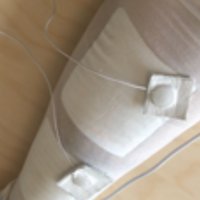
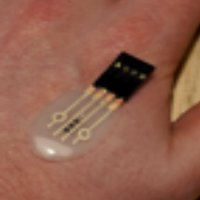
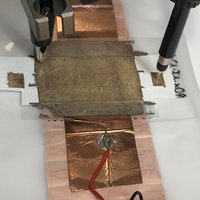
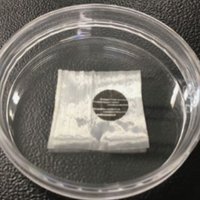
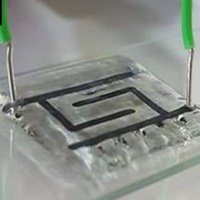
Title: Optical Terahertz Measurements of Skyrmions (OpSky)
Start: 1/7/2021
End: 31/12/2024
Funded by: Independent Research Fund Denmark
Total budget: 2.875.081 DKK
Principal Investigator: Pernille Klarskov Pedersen
Title: Industrial recycling of post-consumer plastics – inline analysis, documentation and sorting
(RePlast)
Start: 1/10/2020
End: 30/9/2024
Funded by: Innovation Fund Denmark
Total budget: 22.724.952 DKK
Coordinated by: Aarhus University
Project Partners: Aarhus University, Plastix A/S, Dansk Affaldsminimering ApS, I/S Vestforbrænding
Title: Terahertz Imaging for Solar Cell Materials
Start: 1/9/2018
End: 31/12/2022
Funded by: Aarhus University Research Foundation (AUFF)
Total budget: 2.400.000 DKK
Principal Investigator: Pernille Klarskov Pedersen
Name: Wireless Transceivers Laboratory
Duration: Sep 2016 – Aug 2019
Granted by: Poul Due Jensen Foundation
Name: Low-Power Wireless Transceivers
Duration: May 2018 - April 2021
Granted by: Poul Due Jensen Foundation
Name: Integrated Qubits Towards Future High-Temperature Silicon Quantum Computing Hardware Technologies
Duration: May 2019 – April 2023
Granted by: European Commission, H2020 Research and Innovation, FET OPEN 2018.